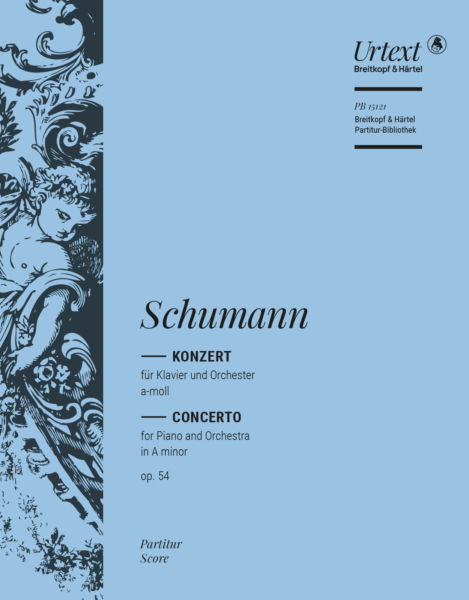Robert Schumann (1810–1856) Klavierkonzert a-moll op. 54
Urtext herausgegeben von Peter Jost [Klav,Orch] Dauer: 30'
Solo: Klav – 2.2.2.2 – 2.2.0.0 – Pk – Str
„Das“ Klavierkonzert im Urtext – In Kooperation mit G. Henle Verlag
EB 10660 ist in Partitur gedruckt; zur Ausführung werden zwei Exemplare benötigt.
Nachdem Sie die gewünschten Ausgaben in den Warenkorb gelegt haben, können Sie dort die benötigte Stückzahl bei Bedarf noch anpassen.
Schumanns a-moll-Konzert gilt als das romantische Klavierkonzert schlechthin, und endlich ist es als Urtext-Ausgabe ediert. Die Quellenlage ist leider lückenhaft, denn die Urfassung des ersten Satzes, eine Phantasie aus dem Jahr 1841, die immerhin zwei Probeaufführungen erlebte, lässt sich nicht mehr rekonstruieren. Andererseits wirft die posthum erschienene Partitur Fragen auf, denn sie weicht von den 1846 nach der Uraufführung gedruckten und von Schumann autorisierten Ausgaben (Solopart und Orchesterstimmen) ab. Im Klavierauszug konnte für den Fingersatz des Soloklaviers die Pianistin Mitsuko Uchida gewonnen werden. Schumanns große Solokonzerte liegen damit bei Breitkopf komplett in Zusammenarbeit mit bedeutenden Interpreten vor, denn beim Violoncellokonzert war Heinrich Schiff, beim Violinkonzert Thomas Zehetmair beteiligt.
„Das Einstudieren des Orchesterparts mit Hilfe der übersichtlichen Partitur ist eine nicht nur auch für Laien technisch bewältigbare, sondern auch eine dankbare Aufgabe.“ (Das Liebhaberorchester)
| 1. Allegro affettuoso |
| 2. Intermezzo |
| 3. Allegro vivace |










 Blättern
Blättern